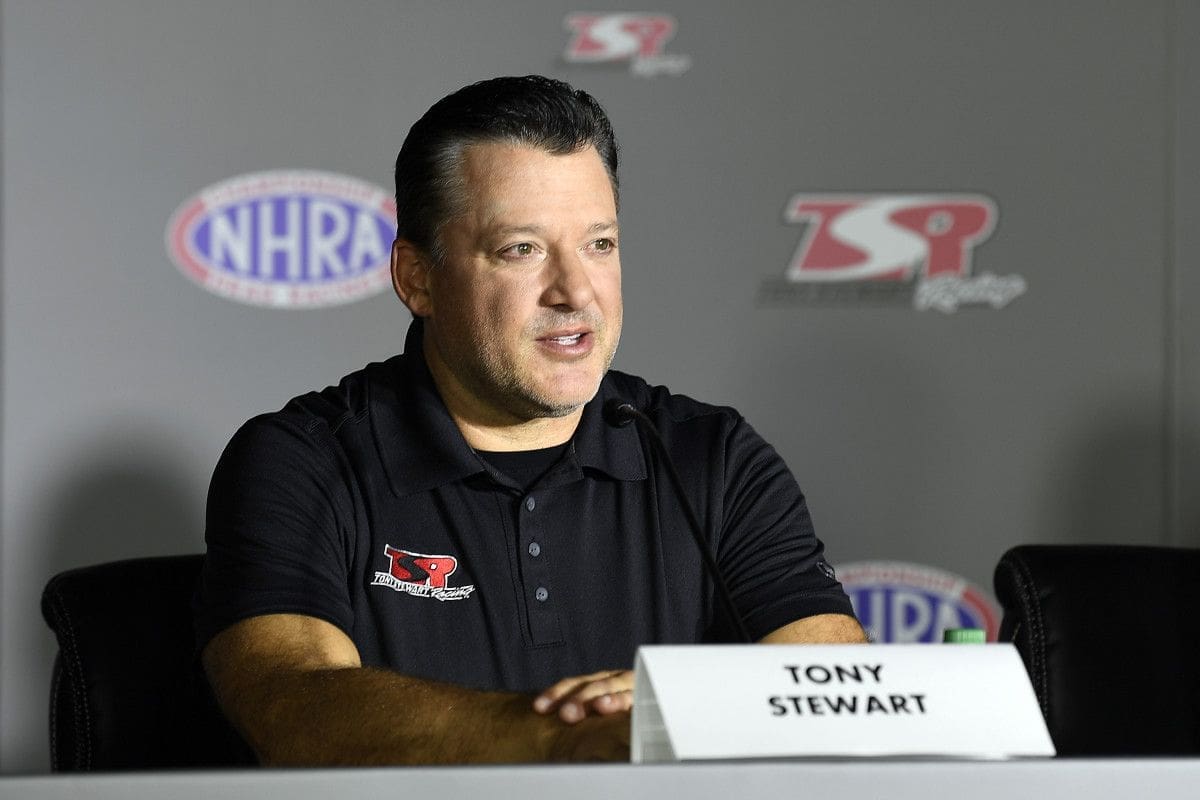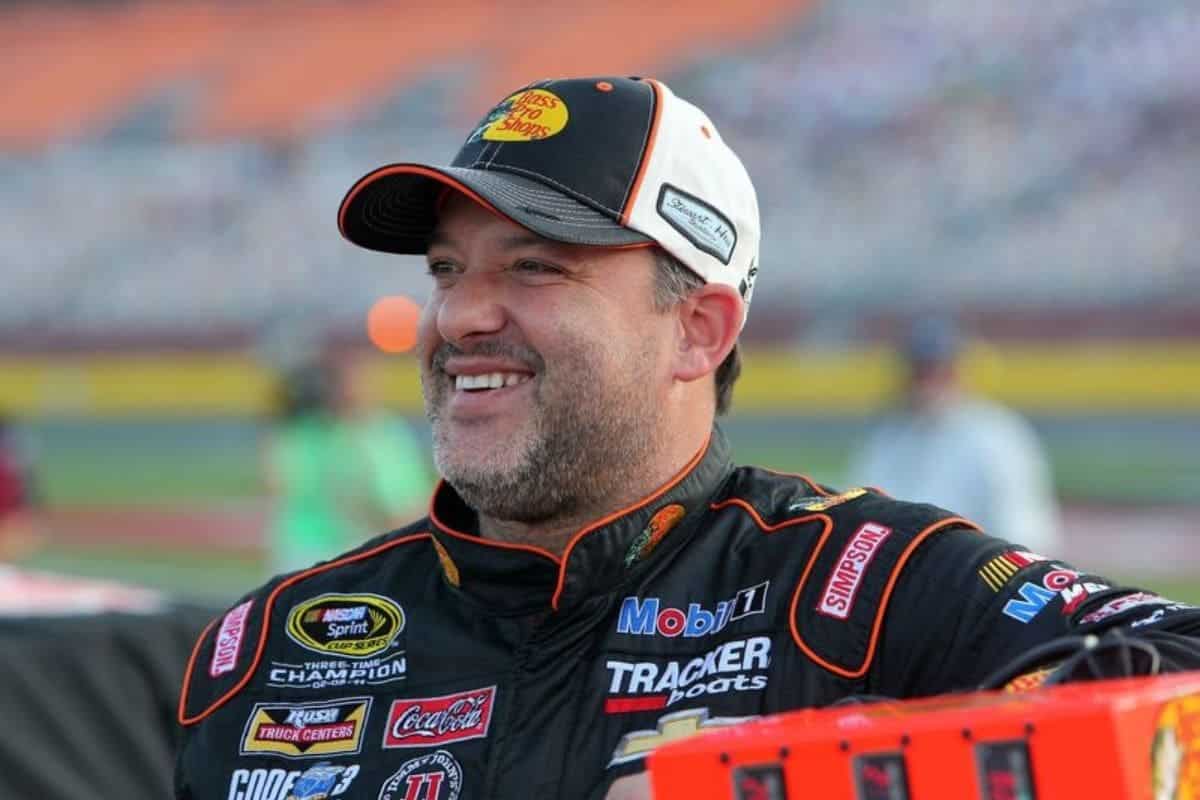Tony Stewart’s NASCAR Exit: Recent revelations by Kevin Harvick have sparked a renewed focus on the underlying reasons behind Tony Stewart’s exit from NASCAR, particularly pointing to a simmering feud with Gene Haas. This internal conflict appears to have precipitated significant strategic shifts within Stewart-Haas Racing, casting a shadow on team dynamics and long-term performance. As the team grapples with the potential fallout, including risks to leadership stability and decision-making efficacy, questions arise about the future direction and competitiveness of Stewart-Haas Racing.
Key Highlights
- Kevin Harvick hinted at internal discord between Tony Stewart and Gene Haas leading to Stewart’s departure.
- Stewart-Haas Racing’s contraction to a single Cup charter may be linked to internal team tensions.
- Harvick’s comments suggest potential internal strife affecting team cohesion and performance.
- Tony Stewart’s exit might have created a leadership vacuum, impacting strategic decisions.
- Speculation surrounds the impact of Stewart’s departure on the team’s operational stability and future direction.
Stewart-Haas Racing’s Rollercoaster Ride
Stewart-Haas Racing’s recent strategic shifts have epitomized the volatility and unpredictability that often characterize the motorsports industry. Initially, the team, co-owned by Gene Haas and Tony Stewart, declared an unexpected exit from NASCAR, a move that stunned fans and analysts. This announcement was soon followed by a dramatic reversal, with Gene Haas confirming that the team would retain a single Cup charter.
The decision to retain a Cup charter signifies a drastic departure from their previously robust multi-car operation. This pivot has raised questions about the team’s long-term strategic goals and its operational sustainability. The racing community is filled with speculation about the underlying reasons for this strategic contraction, with many pointing to the absence of Tony Stewart, whose leadership had been a cornerstone of the team’s success.
Stewart-Haas Racing’s fluctuating strategy has also prompted discussions about the challenges facing NASCAR teams in the current economic and competitive landscape. The high costs associated with maintaining multiple competitive cars, combined with the pressure to secure sponsorships, may have influenced the team’s decision.
Kevin Harvick’s Criticism and Speculation
Kevin Harvick, a veteran driver and integral part of the team’s history, has publicly expressed his bewilderment and frustration over the recent strategic changes, hinting at potential internal discord between Gene Haas and Tony Stewart as a catalyst for the team’s sudden shift. Harvick’s remarks, delivered through his widely-followed podcast, provide a rare glimpse into the intricate dynamics at Stewart-Haas Racing, raising questions about the stability and future direction of the organization.
“I mean, we’ve already gone through a whole process where they told everybody they were leaving the sport, and now we’re like, “Hey, just kidding, here we come, we’re back, we’re going to run a full-time Cup team, and we’re going to rename the team.” – (harvick)
“I have no idea what is happening here now. Now I’m confused. Is there a spat? Did something happen between Gene and Tony? Was Tony just fed up with not being able to do the things he needed to do from the competition side?” – (harvick)
Harvick, who has been a cornerstone of Stewart-Haas Racing since joining the team, did not mince words in his analysis. He described the situation as perplexing, noting that Stewart’s departure could be symptomatic of deeper issues within the team. His comments suggest that the relationship between Haas, the co-owner, and Stewart, a legendary figure in NASCAR and the team’s namesake, may have deteriorated to a point where it significantly influenced strategic decisions.
The speculation about internal strife is particularly salient given Harvick’s stature within the team. As a championship-winning driver and one of the most experienced figures in the sport, his insights carry considerable weight. Harvick’s concern is not merely about the loss of Stewart’s leadership but also about the potential ripple effects on the team’s overall cohesion and competitive edge.
Impact on Team Dynamics and Performance
The departure of Tony Stewart is assured to greatly disrupt the intricate team dynamics and performance metrics at Stewart-Haas Racing, potentially undermining the stability and competitive edge the organization has built over the years. Stewart’s exit raises immediate concerns regarding the team’s ability to maintain the high standards he set. His unique leadership style and deep understanding of racing intricacies have been pivotal in attracting and retaining top-tier talent, fostering a culture of excellence that has driven Stewart-Haas Racing to notable successes.
“Screw it; I’m out of here. I’m not going to race this way with whatever is happening.” – (harvick)
Kevin Harvick has articulated these concerns, showing Stewart’s instrumental role in optimizing team operations. Without Stewart, there is a risk of a vacuum in leadership that could affect decision-making processes and strategic directives. The implications extend beyond the managerial levels to the crew members and drivers, whose performance and morale are likely combined with Stewart’s presence.
Future Driver Prospects and Strategy
Evaluating future driver prospects and strategic pathways, the team must meticulously assess how Cole Custer’s proven skills and familiarity with the organization could strengthen their competitive landscape post-Stewart.
With his championship-winning history in the Xfinity Series and his tenure within Stewart-Haas Racing, Custer emerges as a viable candidate to drive the team’s future success. Kevin Harvick’s endorsement of Custer shows the driver’s potential to become a cornerstone in the team’s long-term strategy.
“If it’s going to be a one-car team, it better be Cole Custer driving it.” – (harvick)
Investing in Custer’s continuous growth is paramount. His existing rapport with the team, coupled with targeted training and mentorship, could accelerate his adaptation to the heightened demands of the Cup Series.
Prioritizing the distribution of top-tier resources to ensure Custer has access to competitive machinery and technical support. This includes cutting-edge technology, advanced engineering, and robust data analytics to optimize performance.
“Pay the people, spend the money.” – (harvick)
“You gotta have the people, and the only way to keep the people to is pay em.” – (harvick)
Strengthening internal unity by fostering a culture of collaboration and communication. Ensuring that all team members, from pit crew to engineers, are aligned with the overarching goal of competitiveness can result in a synergistic increase in performance.
Establishing or strengthening strategic partnerships with key stakeholders, sponsors, and technical partners. This can provide financial stability and access to innovations that keep the team at the forefront of NASCAR racing.
Looking Ahead for Stewart-Haas Racing
As Stewart-Haas Racing looks ahead, how will the team strategically navigate the complexities of driver selection, operational restructuring, and investment prioritization to secure a competitive edge in the upcoming NASCAR season? The departure of Tony Stewart has left a vacuum in leadership and vision, necessitating a recalibration of the team’s strategic framework. Kevin Harvick’s remarks show the pressing need for swift and decisive action to realign the team’s objectives and resources.
In terms of driver selection, the focus will likely be on balancing experience with fresh talent. Identifying drivers who can deliver consistent performance while also aligning with the team’s culture and strategic goals is paramount. Concurrently, operational optimization will entail streamlining processes, improving technical capabilities, and fostering a collaborative environment that can adapt to the constantly changing demands of NASCAR racing.
Investment prioritization is another critical area. Allocating resources effectively to areas like research and development, state-of-the-art technology, and training programs will be pivotal in maintaining a competitive edge. Gene Haas’s future actions will be closely scrutinized by the racing community, as his leadership will be instrumental in steering Stewart-Haas Racing through this period of evolution.
News in Brief: Tony Stewart’s NASCAR Exit
The internal discord between Tony Stewart and Gene Haas, as suggested by Kevin Harvick, sheds light on the potential catalysts behind Stewart’s departure from NASCAR and its subsequent impacts on Stewart-Haas Racing.
This conflict may imperil team cohesion, morale, and strategic decision-making, raising concerns about maintaining performance standards and leadership stability.
Future driver prospects and team strategies will be pivotal in going through this period of change, determining the long-term competitiveness and success of Stewart-Haas Racing.
Our Reader’s Queries
Q. Why did Tony Stewart leave NASCAR?
A. He emphasized that he is not retiring but shifting roles to focus on his position as an owner. His role as an owner of Stewart-Haas Racing has greatly influenced his decision, with the team securing two championships in the past six seasons.
Q. Does Tony Stewart own any NASCAR teams?
A. Stewart-Haas Racing is a championship-winning NASCAR team co-owned by three-time NASCAR Cup Series champion Tony Stewart and Gene Haas, founder of Haas Automation, the largest CNC machine tool manufacturer in North America.
ALSO READ: Tony Stewart Eyes Cup Series Return Amid Gene Haas’ Surprise



